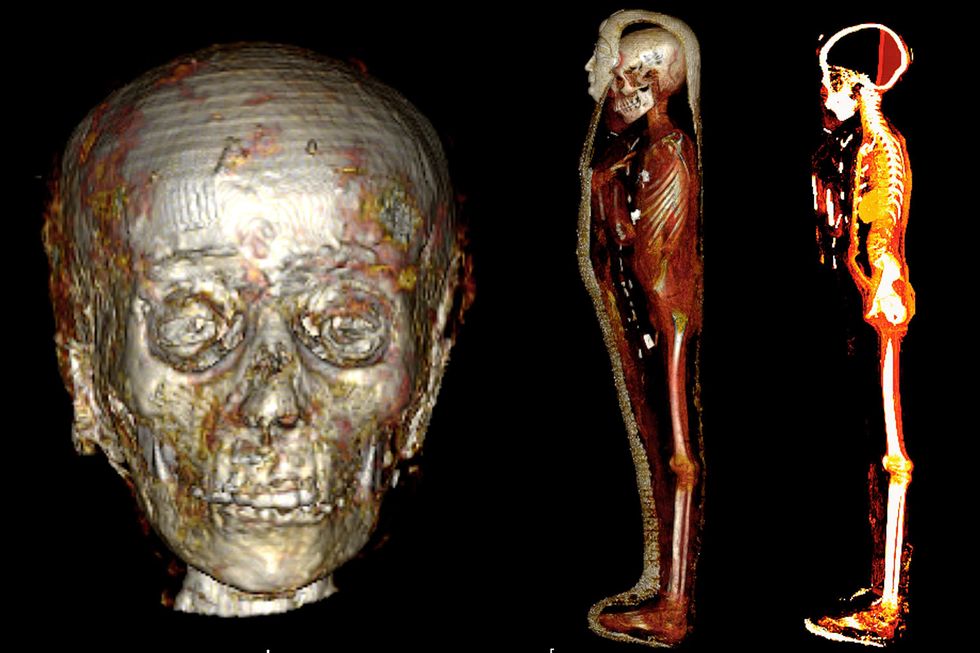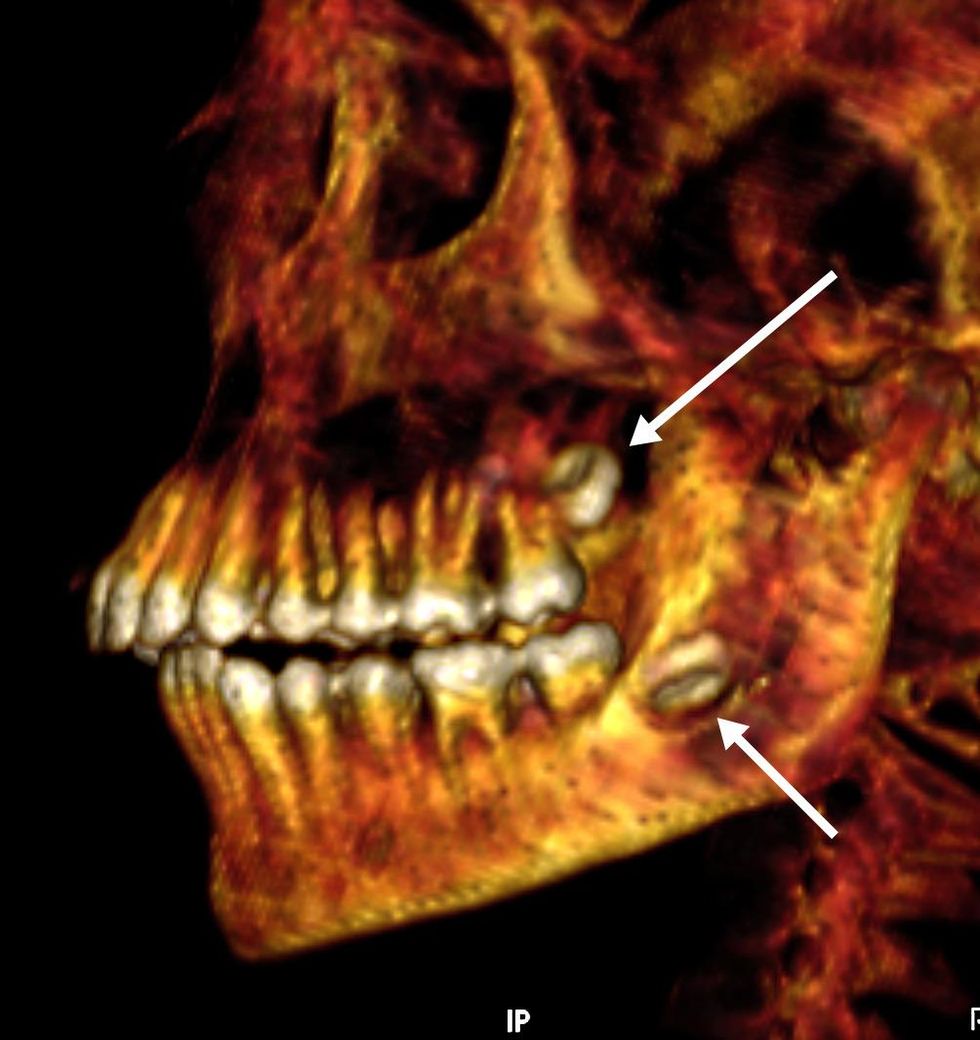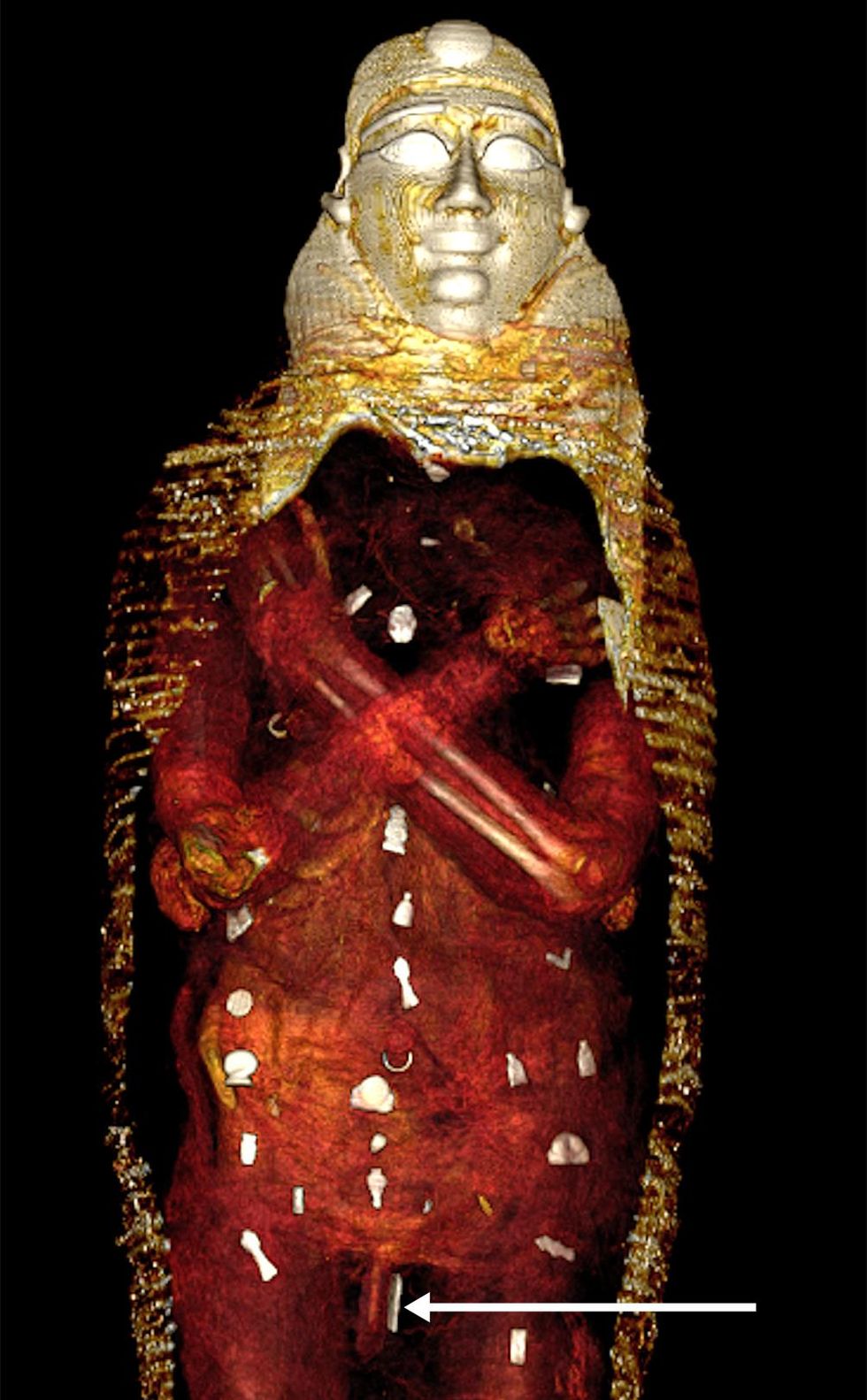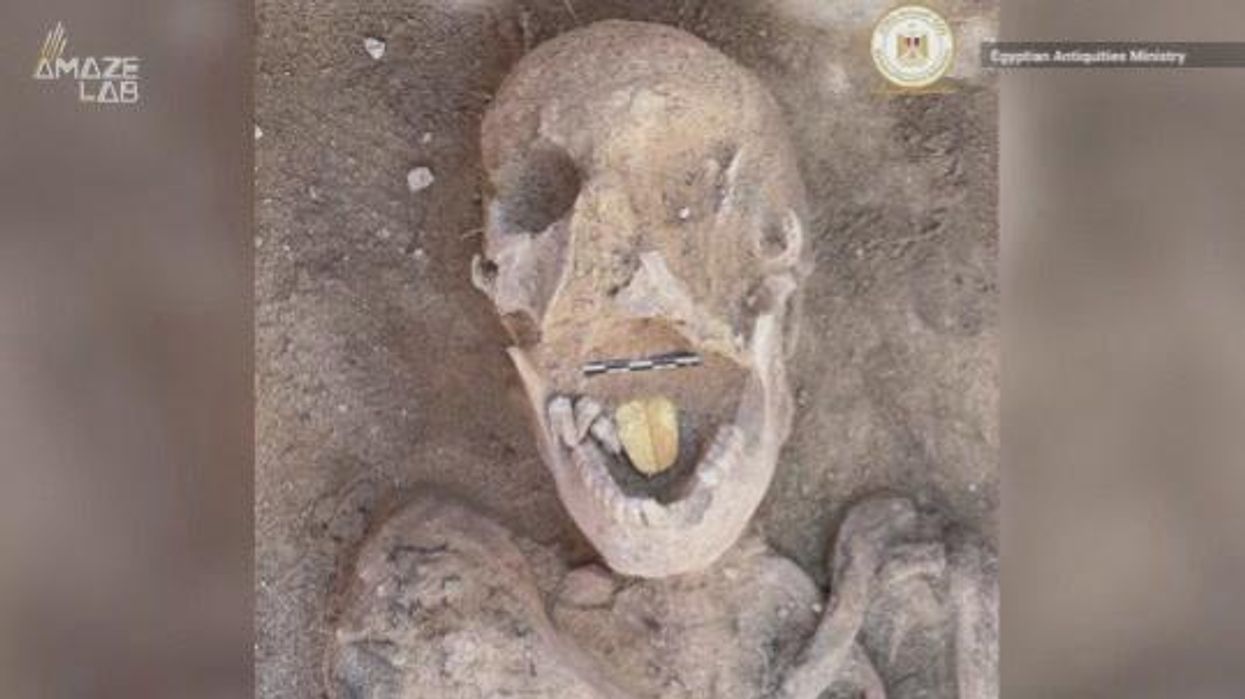A teenage boy, who was mummified around 2,300 years ago, has been revealed to have 49 amulets, many of them gold, buried in and around his body.
The findings were discovered used the latest scanning technology, which avoids disturbing the body and experts believe the findings will help reveal even more about the ancient Egyptian's beliefs about death and the afterlife.
The mummy has been nicknamed 'The Golden Boy' for obvious reasons, was found with 49 amulets of 21 different types inside of his body, which was done so to prepare him for life after death. In addition to this he was also given sandals, so he could walk out of the coffin and make his journey to the other side.
Sign up to our new free Indy100 weekly newsletter
Dr Sahar Saleem, a professor at the Faculty of Medicine of Cairo University, and first author said: “The sandals were probably meant to enable the boy to walk out of the coffin.
“According to the ancient Egyptians’ ritual Book of The Dead, the deceased had to wear white sandals to be pious and clean before reciting its verses.”
Apart from the heart, the organs had been removed through an incision and the brain had been taken out through the nose and replaced with resin.
The precious gifts included a two-finger amulet next to the uncircumcised penis, a golden heart scarab placed in position of the heart and a golden tongue inside his mouth.

Being such a lavish mummy signifies the high socioeconomic status of the boy.
The ancient Egyptians believed that when we died our spiritual body sought out an afterlife similar to our own world.
However, entry required a perilous journey through the underworld, followed by an individual last judgement.
For this reason, relatives did everything they could to ensure that their loved one reached a happy destination.
The amulets have various uses in the afterlife.
The golden tongue leaf was placed inside the mouth to ensure the boy could speak after death, while the two-finger amulet was placed beside his penis to protect the embalming incision.
An Isis Knot, which is an ancient Egyptian symbol linked to the goddess Isis, was given to summon the protection of the goddess in the afterlife.
A right-angle amulet was used to bring balance and levelling and double falcon and ostrich plumes represented the duality of spiritual and material life.
The heart scarab in the shape of a beetle also had an important role.
Dr Saleem explained: “The heart scarab is mentioned in chapter 30 of the Book of the Dead: it was important in the afterlife during judging the deceased and weighing of the heart against the feather of the goddess Maat.
“The heart scarab silenced the heart on Judgement Day, so as not to bear witness against the deceased.
“It was placed inside the torso cavity during mummification to substitute for the heart if the body was ever deprived of this organ.”

Within his coffin he also wore a gilded head mask, a pectoral cartonnage that covered the front of the torso and was garlanded in ferns.
Dr Saleem said: “Ancient Egyptians were fascinated by plants and flowers and believed they possessed sacred and symbolic effects.
“Bouquets of plants and flowers were placed beside the deceased at the time of burial: this was done for example with the mummies of the New Kingdom kings Ahmose, Amenhotep I, and Ramesses the Great.
“The deceased was also offered plants in each visit to the dead during feasts.”
Dr Saleem added: “Here we show that this mummy's body was extensively decorated with 49 amulets, beautifully stylised in a unique arrangement of three columns between the folds of the wrappings and inside the mummy’s body cavity.
“These include the Eye of Horus, the scarab, the akhet amulet of the horizon, the placenta, the Knot of Isis, and others.
“Many were made of gold, while some were made of semiprecious stones, fired clay, or faience.
“Their purpose was to protect the body and give it vitality in the afterlife.”
The team of scientists made these discoveries using CT scans, ensuring that the mummy was never opened and was left undisturbed.
The teenager was 128cm tall, not circumcised and appeared to die from natural causes.

With the condition of his bones and his non-erupted wisdom teeth, it is estimated that the boy was between 14 and 15-years-old.
He had good teeth with no evidence of decay, tooth loss or any dental disease.
The mummy was found in 1916 at a cemetery used between around 332 and 30 BC in Neg el-Hassay in Southern Egypt.
It has been stored unexamined in the basement of the Egyptian Museum in Cairo until now.
The teenager lay inside two coffins, with an outer coffin with a Greek inscription and an inner wooden sarcophagus.
Based on these exciting results, the management of the Egyptian Museum moved the mummy to the main exhibition hall under the nickname ‘Golden boy’.
In its new spot, visitors can admire the mummy next to CT images and a 3D printed version of the heart scarab amulet, to get as close as possible to the glories of ancient Egyptian civilization.
This study was published in the journal Frontiers in Medicine.
Have your say in our news democracy. Click the upvote icon at the top of the page to help raise this article through the indy100 rankings.














